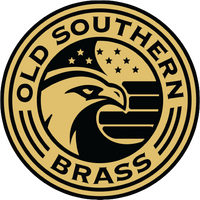
Freedom Flyer: The History of American Whiskey
History of American Whiskey
American whiskey has a rich history, undeniably comparable to its delectable, rich taste. Popular drinks enjoyed by many Americans today include American bourbons, ryes, and Tennessee whiskeys, and these smooth spirits are derived from the east coast of the United States. Our country's rich American whiskey history began back in the late 1700s.
The journey of American whiskey was long and bumpy. Through rebellions, prohibitions, and wars, whiskey survived and transformed into the beloved drink of choice for many Americans hundreds of years after its inception. Now, fasten your seatbelts and get ready to explore the fascinating and turbulent history of American whiskey!
The Birth of American Whiskey
In the late 1700s, as Irish pioneers settled in Virginia, Pennsylvania, and Maryland, these states became the birthplace of American whiskey. In 1791, The first American whiskey glass was poured in the eastern United States. Meanwhile, settlers in Kentucky and Tennessee were gathering resources and raw materials to start brewing their own American whiskey. Many settlers used corn to make whiskey since the lands were plentiful with this resource. The main ingredient of whiskey is fermented grains like corn, wheat, barley, and rye. Whiskey was first brewed as a rye-based product, and as this drink became more popular, President George Washington decided to apply the whiskey tax to the sought-after drink. The taxation of whiskey led to the infamous Whiskey Rebellion.
Whiskey Rebellion: What was the whiskey rebellion and why was it important?
This piece of American history marked the United States’ first test of federal authority. From 1791-1794, a violent tax protest broke out among citizens primarily in Pennsylvania. Farmers thought the tax was unfair and discriminatory. Though protestors used violence and intimidation to try to prevent federal officials from collecting the whiskey tax, the Whiskey Rebellion illustrated that the new national government had the right and ability to suppress resistors.
American Whiskey Development
As whiskey developed, it was divided into two types: bourbon and sour mash. Whiskey grew in popularity quickly and became part of the counterfeit trade. Many people sold other drinks that weren’t whiskey but labeled them as whiskey to earn a profit. The labeling and bottling of whiskey were attempted to be standardized, but back then it wasn’t easy to stop the illegal selling of alcohol.
Whiskey was loved by many throughout history. Prominent figures throughout history, like Abraham Lincoln, George Washington, Thomas Jefferson, and Benjamin Franklin, all had liquor licenses and participated in the whiskey trade.
Until the Bottled in Bond Act was passed in 1897, whiskey was sold fraudulently. This new legislation required whiskey to be stored in a federally bonded warehouse for at least four years and to be sold “straight”, which means it must be 50% alcohol by volume.
In the early 1900s, abuse of this alcoholic drink sparked the prohibition. During the prohibition era, from 1920-1933, it was illegal to produce any alcohol. This era ended after 11 years, however, and whiskey continued to reign in the United States, adding more curves to the fascinating American whiskey history.
American Whiskey Today
Today, whiskey is a drink loved by many Americans. We can thank the quality control standards applied to production throughout history for the survival of this drink. Some of the oldest American whiskey brands include Bushmills, Maker’s Mark, Jim Beam, and Old Overholt, and they still fill our glasses to this day. Raise your whiskey glass in a toast to our rich American whiskey history. Cheers!
